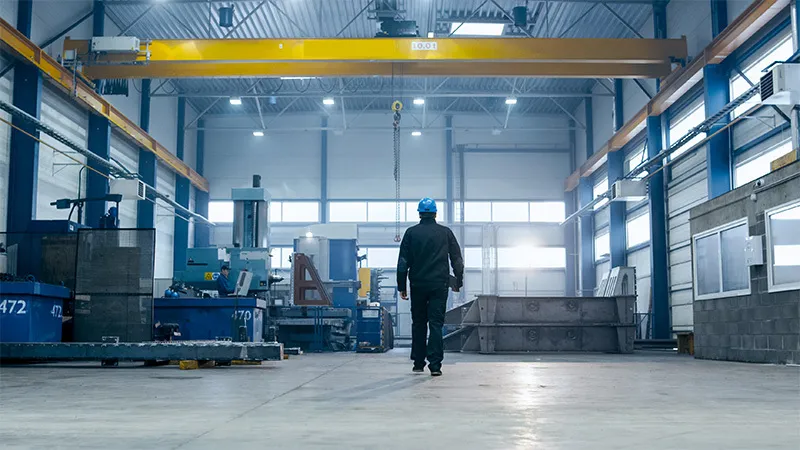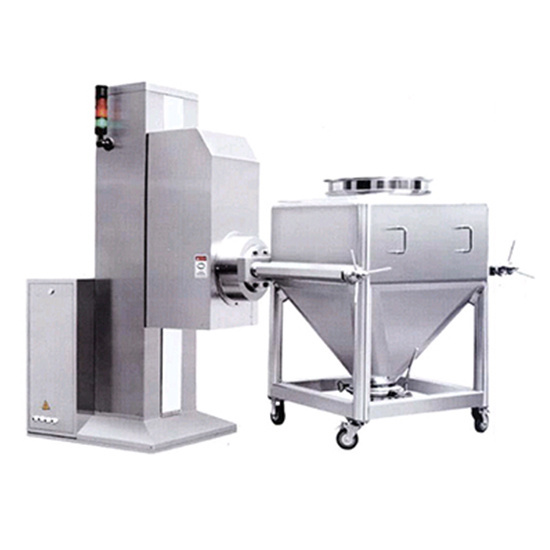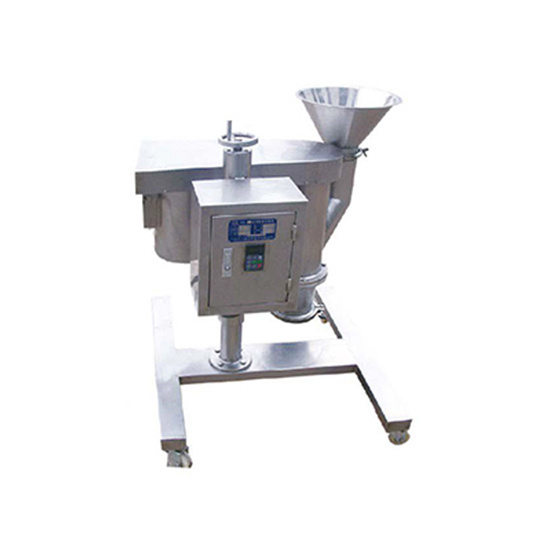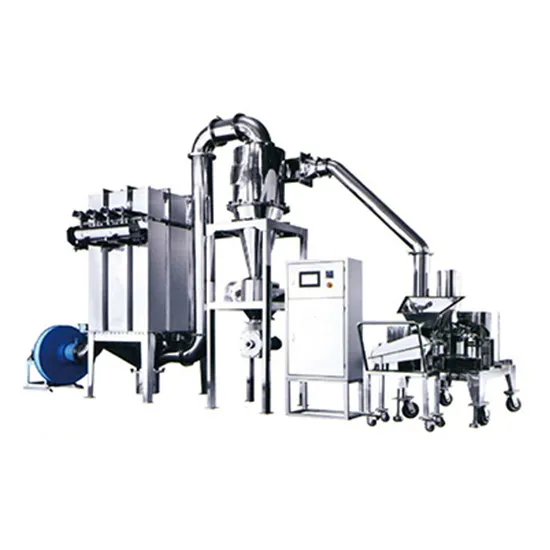NEWS
The Ultimate Guide to Choosing the Best Dedusting Products: Enhancing Air Quality in Industrial Environments
Jan 07,2024
Table of Contents:
1. Introduction: Understanding the Importance of Dedusting Products
2. Key Considerations for Choosing Dedusting Products
2.1. Airflow Capacity and Efficiency
2.2. Filtration Technology and Media
2.3. Dust Collector Type and Configuration
2.4. Maintenance and Operational Costs
2.5. Compliance with Environmental Regulations
2.6. Noise Levels and Energy Consumption
2.7. Scalability and Adaptability
2.8. Brand Reputation and Customer Reviews
3. Different Types of Dedusting Products
3.1. Baghouse Dust Collectors
3.2. Cartridge Dust Collectors
3.3. Cyclone Dust Collectors
3.4. Electrostatic Precipitators
3.5. Wet Scrubbers
3.6. Industrial Ventilation Systems
3.7. Other Dedusting Equipment and Accessories
4. Frequently Asked Questions (FAQs)
4.1. What is the purpose of dedusting products?
4.2. How do dedusting products improve indoor air quality?
4.3. Is it necessary to invest in dedusting products?
4.4. How often should the filters of dedusting products be replaced?
4.5. Can dedusting products be customized according to specific industry requirements?
5. Conclusion: Enhance Air Quality with the Right Dedusting Products
1. Introduction: Understanding the Importance of Dedusting Products
In industrial environments, airborne particles and contaminants pose a significant risk to both employee health and equipment efficiency. Dedusting products play a crucial role in filtering and purifying the air, removing harmful particles and ensuring a clean and safe workspace. This guide will provide you with valuable insights into selecting the best dedusting products tailored to your specific needs.
2. Key Considerations for Choosing Dedusting Products
2.1. Airflow Capacity and Efficiency
When choosing dedusting products, it is essential to assess the required airflow capacity to effectively capture and remove airborne particles. Consider factors such as the size of the workspace, the nature of the pollutants, and the air circulation system. Optimal airflow ensures efficient filtration and maintains a healthy working environment.
2.2. Filtration Technology and Media
Different dedusting products employ various filtration technologies and media to trap and eliminate particles. Evaluate the efficiency and effectiveness of the filtration system, including the filtration media's particle capture rate, size range, and durability. High-quality filters prevent particle reentrainment and offer long-lasting performance.
2.3. Dust Collector Type and Configuration
Selecting the appropriate dust collector type depends on your specific application and industry requirements. Baghouse dust collectors, cartridge dust collectors, cyclone dust collectors, electrostatic precipitators, and wet scrubbers are among the commonly used options. Consider factors such as space availability, dust load, and the need for continuous operation when determining the suitable configuration.
2.4. Maintenance and Operational Costs
The maintenance and operational costs associated with dedusting products should be carefully evaluated. Assess the frequency and complexity of filter replacements, the energy consumption of the system, and the overall maintenance requirements. Opting for cost-effective solutions ensures long-term affordability without compromising the air purification effectiveness.
2.5. Compliance with Environmental Regulations
Industrial operations must adhere to strict environmental regulations regarding air quality and emissions. Ensure that the dedusting products you choose are compliant with relevant standards and regulatory requirements. This guarantees that your workplace is in line with environmental guidelines and avoids potential fines or penalties.
2.6. Noise Levels and Energy Consumption
Consider the noise levels produced by dedusting products to maintain a comfortable and productive working environment. Additionally, energy consumption is a critical aspect to evaluate, as efficient systems can significantly reduce operational costs and contribute to sustainable practices.
2.7. Scalability and Adaptability
As your business grows and changes, the dedusting products should be scalable and adaptable to accommodate increased dust loads and altered facility layouts. Ensure that the chosen equipment can be easily modified or expanded to meet future requirements without substantial investments or disruptions.
2.8. Brand Reputation and Customer Reviews
Research reputable manufacturers and suppliers of dedusting products. Look for brands with a strong reputation for providing high-quality equipment and excellent customer service. Customer reviews and testimonials can offer valuable insights into product reliability, performance, and overall satisfaction.
3. Different Types of Dedusting Products
3.1. Baghouse Dust Collectors
Baghouse dust collectors are widely used in various industries due to their efficiency and versatility. They utilize fabric filter bags to capture dust particles, allowing clean air to pass through. Baghouse systems are suitable for large dust loads and high-temperature applications.
3.2. Cartridge Dust Collectors
Cartridge dust collectors employ pleated filter cartridges to capture particulates. These compact systems are suitable for small to medium-sized applications and provide efficient filtration while requiring minimal space.
3.3. Cyclone Dust Collectors
Cyclone dust collectors rely on centrifugal force to separate particles from the air stream. They are commonly used for coarse dust separation and can be used as pre-collectors in conjunction with other dedusting systems.
3.4. Electrostatic Precipitators
Electrostatic precipitators use an electrostatic charge to collect dust particles on charged plates or electrodes. These systems are highly efficient and effective in removing fine particulates. They are often used in industries with high emission standards.
3.5. Wet Scrubbers
Wet scrubbers utilize water or other liquid solutions to capture and neutralize airborne particles. They are effective in removing both gaseous and particulate pollutants. Wet scrubbers are commonly used in applications where flammable or explosive dust is present.
3.6. Industrial Ventilation Systems
Industrial ventilation systems incorporate a combination of fans, ductwork, and air purifiers to maintain a healthy and clean workspace. These systems ensure proper air circulation and are suitable for controlling temperature, humidity, and pollutant levels.
3.7. Other Dedusting Equipment and Accessories
Apart from the main dedusting systems, various equipment and accessories can enhance the efficiency and performance of the air purification process. These include dust extraction arms, ducting systems, filters, and monitoring devices.
4. Frequently Asked Questions (FAQs)
4.1. What is the purpose of dedusting products?
Dedusting products aim to remove airborne particles and contaminants from industrial environments, improving air quality and ensuring a safe and healthy workspace.
4.2. How do dedusting products improve indoor air quality?
Dedusting products use specialized filtration technologies and media to capture and remove particles, allergens, and pollutants from the air, resulting in cleaner and healthier indoor air.
4.3. Is it necessary to invest in dedusting products?
Investing in dedusting products is crucial for industries that generate dust or deal with harmful pollutants. It helps protect employee health, enhance equipment efficiency, comply with regulations, and maintain a clean working environment.
4.4. How often should the filters of dedusting products be replaced?
The frequency of filter replacements depends on various factors, including the type of dedusting product, dust load, and operating conditions. Regular inspection and maintenance are necessary to determine the optimal replacement intervals.
4.5. Can dedusting products be customized according to specific industry requirements?
Yes, dedusting products can be customized to meet specific industry requirements. Reputable manufacturers often offer tailored solutions to address unique challenges and ensure optimal air purification.
5. Conclusion: Enhance Air Quality with the Right Dedusting Products
Choosing the best dedusting products involves considering factors such as airflow capacity, filtration technology, dust collector type, maintenance costs, compliance, and scalability. By selecting high-quality equipment from reputable manufacturers, you can effectively improve air quality, protect employee health, and maintain a productive and safe industrial environment. Invest in the right dedusting products today and enjoy the benefits of clean and purified air.
Remember, the key to outranking other websites lies not only in the content itself but also in optimizing it for search engines. By utilizing long-tail keywords, semantic words, and following best SEO practices, your article can stand out and attract a wider audience.
1. Introduction: Understanding the Importance of Dedusting Products
2. Key Considerations for Choosing Dedusting Products
2.1. Airflow Capacity and Efficiency
2.2. Filtration Technology and Media
2.3. Dust Collector Type and Configuration
2.4. Maintenance and Operational Costs
2.5. Compliance with Environmental Regulations
2.6. Noise Levels and Energy Consumption
2.7. Scalability and Adaptability
2.8. Brand Reputation and Customer Reviews
3. Different Types of Dedusting Products
3.1. Baghouse Dust Collectors
3.2. Cartridge Dust Collectors
3.3. Cyclone Dust Collectors
3.4. Electrostatic Precipitators
3.5. Wet Scrubbers
3.6. Industrial Ventilation Systems
3.7. Other Dedusting Equipment and Accessories
4. Frequently Asked Questions (FAQs)
4.1. What is the purpose of dedusting products?
4.2. How do dedusting products improve indoor air quality?
4.3. Is it necessary to invest in dedusting products?
4.4. How often should the filters of dedusting products be replaced?
4.5. Can dedusting products be customized according to specific industry requirements?
5. Conclusion: Enhance Air Quality with the Right Dedusting Products
1. Introduction: Understanding the Importance of Dedusting Products
In industrial environments, airborne particles and contaminants pose a significant risk to both employee health and equipment efficiency. Dedusting products play a crucial role in filtering and purifying the air, removing harmful particles and ensuring a clean and safe workspace. This guide will provide you with valuable insights into selecting the best dedusting products tailored to your specific needs.
2. Key Considerations for Choosing Dedusting Products
2.1. Airflow Capacity and Efficiency
When choosing dedusting products, it is essential to assess the required airflow capacity to effectively capture and remove airborne particles. Consider factors such as the size of the workspace, the nature of the pollutants, and the air circulation system. Optimal airflow ensures efficient filtration and maintains a healthy working environment.
2.2. Filtration Technology and Media
Different dedusting products employ various filtration technologies and media to trap and eliminate particles. Evaluate the efficiency and effectiveness of the filtration system, including the filtration media's particle capture rate, size range, and durability. High-quality filters prevent particle reentrainment and offer long-lasting performance.
2.3. Dust Collector Type and Configuration
Selecting the appropriate dust collector type depends on your specific application and industry requirements. Baghouse dust collectors, cartridge dust collectors, cyclone dust collectors, electrostatic precipitators, and wet scrubbers are among the commonly used options. Consider factors such as space availability, dust load, and the need for continuous operation when determining the suitable configuration.
2.4. Maintenance and Operational Costs
The maintenance and operational costs associated with dedusting products should be carefully evaluated. Assess the frequency and complexity of filter replacements, the energy consumption of the system, and the overall maintenance requirements. Opting for cost-effective solutions ensures long-term affordability without compromising the air purification effectiveness.
2.5. Compliance with Environmental Regulations
Industrial operations must adhere to strict environmental regulations regarding air quality and emissions. Ensure that the dedusting products you choose are compliant with relevant standards and regulatory requirements. This guarantees that your workplace is in line with environmental guidelines and avoids potential fines or penalties.
2.6. Noise Levels and Energy Consumption
Consider the noise levels produced by dedusting products to maintain a comfortable and productive working environment. Additionally, energy consumption is a critical aspect to evaluate, as efficient systems can significantly reduce operational costs and contribute to sustainable practices.
2.7. Scalability and Adaptability
As your business grows and changes, the dedusting products should be scalable and adaptable to accommodate increased dust loads and altered facility layouts. Ensure that the chosen equipment can be easily modified or expanded to meet future requirements without substantial investments or disruptions.
2.8. Brand Reputation and Customer Reviews
Research reputable manufacturers and suppliers of dedusting products. Look for brands with a strong reputation for providing high-quality equipment and excellent customer service. Customer reviews and testimonials can offer valuable insights into product reliability, performance, and overall satisfaction.
3. Different Types of Dedusting Products
3.1. Baghouse Dust Collectors
Baghouse dust collectors are widely used in various industries due to their efficiency and versatility. They utilize fabric filter bags to capture dust particles, allowing clean air to pass through. Baghouse systems are suitable for large dust loads and high-temperature applications.
3.2. Cartridge Dust Collectors
Cartridge dust collectors employ pleated filter cartridges to capture particulates. These compact systems are suitable for small to medium-sized applications and provide efficient filtration while requiring minimal space.
3.3. Cyclone Dust Collectors
Cyclone dust collectors rely on centrifugal force to separate particles from the air stream. They are commonly used for coarse dust separation and can be used as pre-collectors in conjunction with other dedusting systems.
3.4. Electrostatic Precipitators
Electrostatic precipitators use an electrostatic charge to collect dust particles on charged plates or electrodes. These systems are highly efficient and effective in removing fine particulates. They are often used in industries with high emission standards.
3.5. Wet Scrubbers
Wet scrubbers utilize water or other liquid solutions to capture and neutralize airborne particles. They are effective in removing both gaseous and particulate pollutants. Wet scrubbers are commonly used in applications where flammable or explosive dust is present.
3.6. Industrial Ventilation Systems
Industrial ventilation systems incorporate a combination of fans, ductwork, and air purifiers to maintain a healthy and clean workspace. These systems ensure proper air circulation and are suitable for controlling temperature, humidity, and pollutant levels.
3.7. Other Dedusting Equipment and Accessories
Apart from the main dedusting systems, various equipment and accessories can enhance the efficiency and performance of the air purification process. These include dust extraction arms, ducting systems, filters, and monitoring devices.
4. Frequently Asked Questions (FAQs)
4.1. What is the purpose of dedusting products?
Dedusting products aim to remove airborne particles and contaminants from industrial environments, improving air quality and ensuring a safe and healthy workspace.
4.2. How do dedusting products improve indoor air quality?
Dedusting products use specialized filtration technologies and media to capture and remove particles, allergens, and pollutants from the air, resulting in cleaner and healthier indoor air.
4.3. Is it necessary to invest in dedusting products?
Investing in dedusting products is crucial for industries that generate dust or deal with harmful pollutants. It helps protect employee health, enhance equipment efficiency, comply with regulations, and maintain a clean working environment.
4.4. How often should the filters of dedusting products be replaced?
The frequency of filter replacements depends on various factors, including the type of dedusting product, dust load, and operating conditions. Regular inspection and maintenance are necessary to determine the optimal replacement intervals.
4.5. Can dedusting products be customized according to specific industry requirements?
Yes, dedusting products can be customized to meet specific industry requirements. Reputable manufacturers often offer tailored solutions to address unique challenges and ensure optimal air purification.
5. Conclusion: Enhance Air Quality with the Right Dedusting Products
Choosing the best dedusting products involves considering factors such as airflow capacity, filtration technology, dust collector type, maintenance costs, compliance, and scalability. By selecting high-quality equipment from reputable manufacturers, you can effectively improve air quality, protect employee health, and maintain a productive and safe industrial environment. Invest in the right dedusting products today and enjoy the benefits of clean and purified air.
Remember, the key to outranking other websites lies not only in the content itself but also in optimizing it for search engines. By utilizing long-tail keywords, semantic words, and following best SEO practices, your article can stand out and attract a wider audience.
More News










